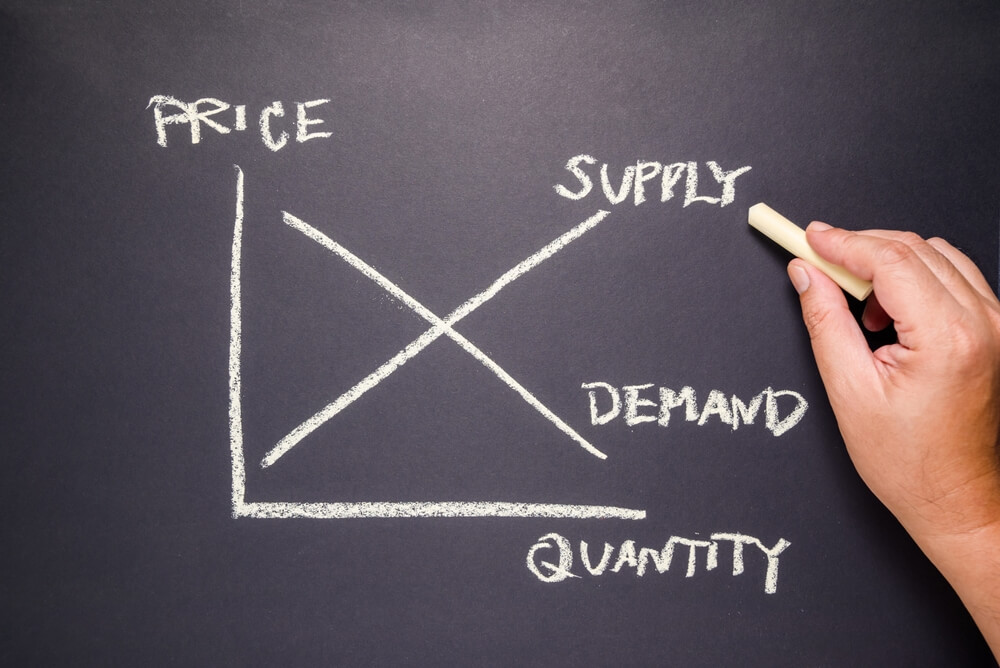
What is the quantity demanded – Get All The Information.
Key Takeaways:
- Understanding the quantity demanded is vital in economics, linking price and consumer preferences.
- Differentiating “demand (D)” and “quantity demanded (QD)” informs decision-making by revealing the price-consumer behaviour connection.
- The price elasticity of demand distinguishes elastic and inelastic goods, showing consumer responsiveness to price changes.
- Recognizing changes in it due to price or preference shifts is crucial for navigating economic dynamics.
Have you ever pondered the intricate concept of quantity demanded and its significance in economics? For a true professional, grasping the meaning of it isn’t just an academic endeavour; it’s a crucial tool for navigating the intricate landscape of supply and demand dynamics.
This fundamental concept provides invaluable insights into consumer behaviour and market equilibrium.
In the dynamic world of business and economics, distinguishing between “demand” and “quantity demanded” is paramount.
It enables professionals to make informed decisions by delving into the intricate relationship between price and consumer preferences. Learn more about the concept of quantity demanded in the following article!
What Does Quantity Demand to Entail, Including Its Meaning?
Quantity demanded (QD) signifies the aggregate amount of a particular product or service consumers desire during a specific period.
This parameter hinges on the prevailing price of the product or service within a given market, irrespective of whether it finds itself in equilibrium.
It embodies the concept of a change in quantity demanded, which denotes alterations in consumer appetite due to shifts in price.
What is the number one difference between demand and quantity demanded?

In economics, it is crucial to distinguish between “demand” and “QD.”
“Demand” encompasses the comprehensive connection between the cost of a product or service and the quantity (Q) desired by consumers across various price ranges.
It delves into the intricate interplay of consumer preferences, market conditions, and pricing.
On the flip side, “QD” zeroes in on a specific point within the demand (D) curve, accurately specifying the amount of a product consumers are prepared to purchase at a given price.
This precise measurement captures the immediate response of consumers to prevailing market conditions, highlighting their readiness to purchase a particular quantity at a specific price point.
Distinction between D and QD
This main distinction between “demand” and “quantity demanded” is instrumental in shedding light on the economic dynamics of supply and demand.
It measures how responsive individuals are to price fluctuations, thereby influencing the market’s equilibrium between supply and demand.
It’s all about understanding the intricate interplay of supply and demand, where consumer choices and market dynamics converge.
Get the example
Let’s dive into a real-life example: Consumers purchase two hot dogs daily at a price of $5 per hot dog, resulting in a demand of two. Should vendors raise the hot dog price to $6, the demand drops to one.
On a graph, this transition from two to one is evident as we move along the horizontal axis with the price shift from $5 to $6.
By plotting these data points on a graph, we construct a demand curve representing the relationship between price and the quantity requested.

The standard demand curve displays these points on a descending line, with price on the vertical axis and the quantity of hot dogs on the horizontal axis.
This shows that as price increases, demand decreases – illustrating the inverse relationship between price and demand.
Price Elasticity of Demand
The price elasticity of demand gauges how responsive the quantity requested is to price changes. Highly elastic goods see significant quantity shifts with price variations, while inelastic goods experience minimal changes in quantity demanded.
In other words, price fluctuations impact quantity demanded, with the horizontal axis illustrating these shifts. The key is recognizing the interplay between demand vs QD, the concept of price elasticity of demand, and the influence of price changes on consumer behaviour.
Understanding Quantity Demanded
In buying and selling goods and services, price is critical in determining how much people want these products.
This is depicted by the demand curve, which visually illustrates the connection between price and the quantity of goods or services individuals are inclined to purchase.
As per the law of demand, there’s an inverse relationship between price and consumer preferences. Consumer demand generally decreases when prices increase, causing a shift in the demand curve.
This shift reflects the changes in quantity demanded at different price levels, elucidating how pricing impacts consumer behaviour and influences the representation of the relationship between price and demand.
What results in an increase in demand?

Conversely, consumer interest tends to intensify when prices fall, increasing demand. In straightforward terms, as the price surges, the quantity demanded decreases, while as the price drops, the quantity demanded experiences an upward shift.
This dynamic is visually represented as shifts in the demand curve, highlighting the impact of price fluctuations on consumer behaviour and market dynamics.
Changes in QD
Changes in quantity demanded refer to shifts in how much of a product people are willing to buy. These changes happen because of fluctuations in the price of goods and services.
Increase
Once the full price of goods and services decreases, people typically desire a greater quantity of them (and vice versa).
A demand curve serves as a visual representation of how the QD changes at varying price points within the market.
Now, when we talk about a “change in demand” or a “change in quantity demanded,” we’re delving into how people respond to alterations in price.
Exploring Quantity Demanded Changes

A change in quantity demanded signifies that consumers are reacting to price shifts, and this reaction is graphically illustrated as a movement along the demand curve.
Furthermore, the elasticity of demand, which measures the degree of change in quantity demanded in response to price adjustments, is intricately linked to the steepness of the demand curve.
This relationship between “change in demand” and “change in QD” elucidates how pricing influences consumer behaviour and market dynamics.
Bottom line
In conclusion, understanding QD is vital in economics, as it reveals how price interacts with consumer preferences. Differentiating between “demand” and “quantity demanded” is key to clarity.
The concept of price elasticity of demand helps distinguish between elastic and inelastic goods, showing consumer responsiveness.
Identifying changes in QD, whether due to price shifts or shifts in consumer preferences, is crucial for navigating economic dynamics. These shifts are visually represented in the demand curve, offering a clear picture of these fluctuations.
This understanding equips professionals to make informed decisions in the economic arena, particularly when dealing with demand curve shifts and decreased demand, enabling them to thrive in dynamic markets.




